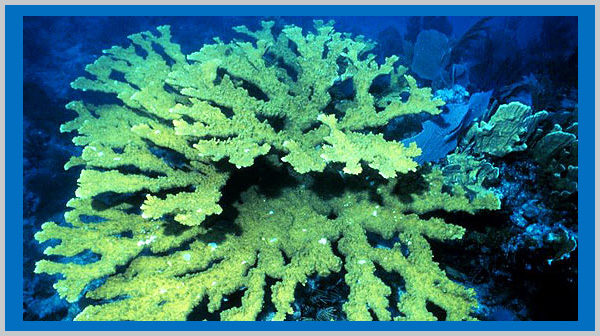
Coral Reefs
The International Union for the Conservation of Nature (IUCN) has named coral reefs as one of the life-support systems essential for our own survival. Found around coastlines in the tropics, coral reefs provide homes for about a third of all fish species on Earth and numerous other marine organisms.
Reefs are physically as well as biologically important; coral reefs play a fundamental role in protecting coastlines from erosion and contribute to the formation of white sandy beaches.
These complex, fragile ecosystems are deteriorating at an alarming rate worldwide.
Coral reefs actually are communities of hundreds of thousands of tiny animals called coral polyps, which grow in sunlit shallows of warm, clear marine waters. The reefs are built up as new corals attach atop the skeletons of dead animals.
Causes of Endangerment
Pollution, Overexploitation and Recreation
The coral species that are the reef’s foundation have very specific needs for light, temperature, salinity, and oxygen. They are easily damaged or killed because of these complex requirements for survival. Human-caused deterioration lessens the reef’s ability to withstand natural events such as hurricanes, cyclones, and other storms.
Reefs are sensitive to unusually warm waters caused by El Nino, a phenomenon thought to be connected to global warming. Large areas of reef died in Costa Rica, Panama, and the Galapagos during the El Nino event of 1984.
Population and development pressures have contributed significantly to loss of coral reefs and other coastal habitats, such as salt marshes, mangrove forests, and seagrass beds, and the fisheries that depend on these. Reefs are smothered by erosion from deforestation and dredging of rivers and bays.
They also are blown up by fishers using dynamite, poisoned by collectors working for the aquarium trade, and inadvertently damaged by recreationists (boaters and scuba divers). An estimated 80 percent of Philippine reefs, for example, have been damaged by sedimentation, explosives, and pollution.
Recently, scientists have become alarmed by increased occurrences of “coral bleaching.” Coral reefs in many places in the world are turning white and sometimes dying. Coral gets its beautiful colors from algae that lives symbiotically with it.
Through photosynthesis, the algae produce oxygen and sugars for the coral polyps to eat. The coral, in turn, produces carbon dioxide and nitrogen which enhances algae growth. If coral polyps are stressed by environmental changes, they lose their algae coating and turn white.
Cyanide and other toxins are used to stun reef fish so they can be captured alive to be sent to fish markets in Hong Kong and as aquarium specimens for buyers in the United States. The accumulation of poisons is killing the reefs (see also Spotlight on Threatened Marine Life).
In the past, the corals themselves were mostly sold as dried specimens for jewelry and decorations. Improvements in the ability to keep corals alive, however, has spurred a worldwide demand for live corals for aquariums.
Reef recreation, such as glass-bottom boat tours, snorkeling, and scuba diving, is increasingly popular. Damage from anchors and accidental boat groundings is a severe problem in some popular spots. Divers stand on reefs or inadvertently hit them with fins or dangling equipment, breaking off pieces of the fragile coral.
Conservation Actions
Trade Regulation
All stony corals are listed in CITES Appendix II. Trade is allowed only with export permits. International agreements to control the rampant collection of reef fishes and other marine animals for the aquarium trade are also in place. However, poaching and smuggling are still widespread.
Habitat Protection and Education of Recreationists
Some countries have made great strides in saving their endangered reefs. Australia’s Great Barrier Reef Marine Park is the largest of its kind, covering an area bigger than the United Kingdom and including 2,900 separate reef formations and 300 reef islands, some 1,400 miles (2,250 km) long.
Many other countries, including the United States, have created marine parks to protect coral reefs. Park management practices often include establishing buoys for anchoring and educating boaters and divers about how to prevent reef damage.
Question for Thought
Do you think protection of coral reefs through marine reserves and careful recreation is enough? What other problems need to be addressed for coral reefs to survive?
Explore:
Related Classroom Activities:
[CS1-1,CS1-9,CS2-1, General]
Click here for Endangered Species Classroom Glossary